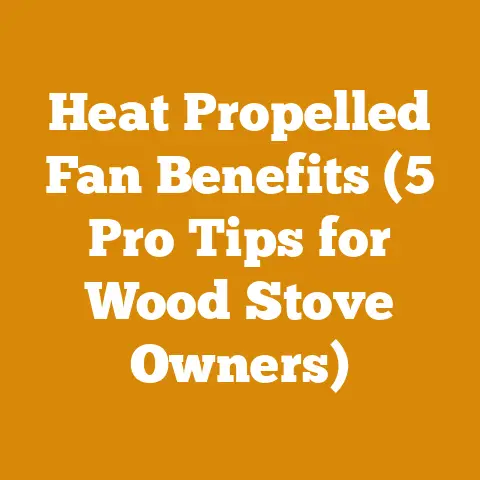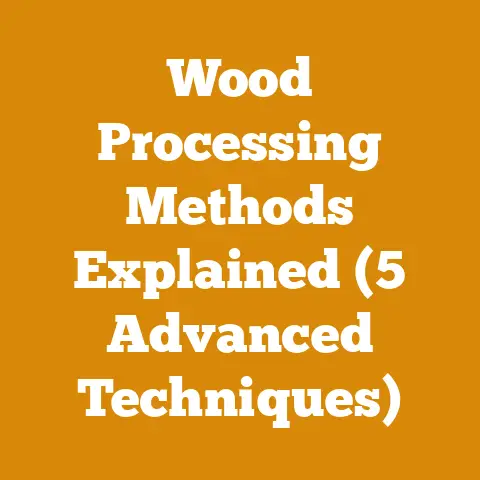Honda HRN 216 Mower Troubleshooting (Knocking Noise Fix Tips)
Let’s get started!
Silence the Symphony of Clanks: Troubleshooting Knocking Noises in Your Honda HRN 216 Mower
The smell of freshly cut grass, the satisfaction of a perfectly manicured lawn – these are the simple pleasures that make yard work worthwhile. But what happens when that peaceful hum of your Honda HRN 216 mower is replaced by a disconcerting knocking sound? It’s enough to send shivers down any homeowner’s spine, especially for those of us who depend on our trusty mowers to keep our little slice of the world looking its best. As someone who grew up splitting wood with my grandfather and now manages a small woodlot and regularly uses powered equipment, I understand the frustration of mechanical woes. A knocking engine is more than just a nuisance; it’s a sign that something’s amiss, and ignoring it can lead to bigger, more expensive problems down the road.
Globally, the lawn care equipment market is a significant industry. Studies estimate it to be worth billions of dollars, with walk-behind mowers like the Honda HRN 216 holding a substantial share. This popularity means there are a lot of mowers out there, and unfortunately, a lot of opportunities for things to go wrong. In fact, industry surveys show that engine-related issues, including unusual noises, are among the most common complaints from mower owners.
Understanding the Symphony of Sounds: Identifying the Knock
Before we dive into the nitty-gritty, it’s crucial to understand what a “knocking” noise actually sounds like. Is it a light tap, a heavy thud, or something in between? The more precisely you can describe the sound, the easier it will be to pinpoint the source.
- Light Tapping: Often associated with valve issues. This is a higher-pitched, rapid knocking.
- Heavy Thudding: This usually indicates a problem deeper within the engine, such as a connecting rod issue. It’s a lower-pitched, more forceful sound.
- Intermittent Knocking: This could be a sign of loose components or debris.
- Consistent Knocking: This often points to a more serious, ongoing mechanical problem.
Try to isolate when the knocking occurs. Does it happen only when the engine is cold, or does it persist even after it’s warmed up? Does the knocking get louder as you increase the engine speed? The answers to these questions will provide valuable clues.
Preliminary Checks: The Low-Hanging Fruit
Before assuming the worst, let’s start with some easy checks. These are the “low-hanging fruit” – simple fixes that can often resolve the problem without requiring specialized tools or expertise.
- Check the Oil Level: This is the absolute first thing you should do. Low oil levels are a common culprit for engine knocking. The engine relies on oil for lubrication, and without enough, parts can grind against each other, creating that dreaded noise.
- How to Check: Consult your Honda HRN 216 owner’s manual for the correct procedure. Generally, you’ll need to remove the dipstick, wipe it clean, reinsert it fully, and then remove it again to check the oil level. The oil should be between the “low” and “full” marks.
- Action: If the oil is low, add the recommended type of oil (specified in your owner’s manual) until it reaches the “full” mark. Start the mower and listen to see if the knocking has subsided.
- Inspect the Spark Plug: A faulty spark plug can cause the engine to misfire, which can sometimes sound like a knocking noise.
- How to Inspect: Disconnect the spark plug wire. Use a spark plug wrench to remove the spark plug. Inspect the electrode (the tip) for signs of damage, wear, or fouling (carbon buildup).
- Action: If the spark plug looks damaged or fouled, replace it with a new one of the correct type (again, consult your owner’s manual). Ensure the gap is set correctly before installation.
- Examine the Air Filter: A clogged air filter can restrict airflow to the engine, causing it to run lean and potentially knock.
- How to Examine: Remove the air filter cover and inspect the filter element.
- Action: If the air filter is dirty, clean it (if it’s a reusable type) or replace it with a new one.
- Fuel Quality: Stale or contaminated fuel can also cause engine problems.
- Action: Drain the old fuel and replace it with fresh fuel. Consider using a fuel stabilizer, especially if you don’t use your mower frequently.
- Loose Components: Give the mower a thorough visual inspection. Check for any loose bolts, screws, or other components that could be vibrating and causing a knocking sound. Pay close attention to the engine shroud, muffler, and blade mounting hardware.
- Action: Tighten any loose components.
These simple checks will often resolve the issue. If the knocking persists after these steps, it’s time to dig a little deeper.
Deeper Dive: Investigating Potential Engine Problems
If the preliminary checks didn’t solve the problem, the knocking is likely originating from within the engine itself. This requires a more thorough investigation. Proceed with caution, and if you’re not comfortable working on engines, it’s best to consult a qualified mechanic.
- Valve Train Issues: The valve train controls the opening and closing of the engine’s valves. Problems here can definitely cause knocking.
- Valve Clearance: Incorrect valve clearance (the gap between the valve stem and the rocker arm) is a common culprit. Too much clearance results in a tapping or knocking sound.
- How to Check: This requires removing the valve cover and using a feeler gauge to measure the valve clearance. Consult your Honda HRN 216 service manual for the correct clearance specifications.
- Action: Adjust the valve clearance according to the service manual’s instructions. This typically involves loosening a locknut and turning an adjustment screw.
- Worn or Damaged Valves: Worn or damaged valves can also cause knocking.
- How to Check: Visual inspection after removing the valve cover. Look for signs of wear, pitting, or bending.
- Action: Replacement of worn or damaged valves is usually necessary. This is a more complex repair that may require specialized tools and expertise.
- Sticking Valves: Carbon buildup can cause valves to stick, leading to irregular engine operation and knocking.
- How to Check: Difficult to diagnose without removing the cylinder head.
- Action: Cleaning or replacing the valves. In some cases, using a fuel additive designed to clean fuel injectors and valves can help.
- Valve Clearance: Incorrect valve clearance (the gap between the valve stem and the rocker arm) is a common culprit. Too much clearance results in a tapping or knocking sound.
- Connecting Rod Issues: The connecting rod connects the piston to the crankshaft. If the connecting rod bearing fails, the connecting rod can knock against the crankshaft. This is a serious problem.
- How to Diagnose: This is difficult to diagnose without disassembling the engine. However, a heavy, rhythmic knocking sound that gets louder as the engine speed increases is a strong indicator.
- Action: This usually requires a complete engine rebuild or replacement. Don’t attempt to run the engine if you suspect a connecting rod issue, as it can cause further damage.
- Piston Slap: As the piston moves up and down in the cylinder, it can rock slightly from side to side. Excessive rocking, known as “piston slap,” can cause a knocking sound.
- How to Diagnose: Piston slap is often more pronounced when the engine is cold and diminishes as it warms up.
- Action: In severe cases, the engine may need to be rebuilt with new pistons and cylinders. However, some piston slap is normal, especially in older engines, and may not require immediate repair.
- Crankshaft Issues: While less common, problems with the crankshaft or crankshaft bearings can also cause knocking.
- How to Diagnose: Similar to connecting rod issues, this is difficult to diagnose without engine disassembly.
- Action: Usually requires an engine rebuild or replacement.
The Blade Brake Clutch (BBC): A Potential Culprit
The Honda HRN 216 is often equipped with a Blade Brake Clutch (BBC) system. This system stops the blade from spinning when you release the handle, adding an extra layer of safety. However, the BBC itself can sometimes be a source of knocking noises.
- How to Check: Engage and disengage the BBC lever while the engine is running (with the mower safely on a level surface and no obstructions). Listen for any unusual noises coming from the BBC mechanism.
- Action: If you suspect the BBC is the problem, consult your owner’s manual for troubleshooting steps. The BBC may need to be adjusted, lubricated, or even replaced.
Parallels to Wood Processing: Lessons from the Forest
My experience with wood processing has taught me valuable lessons about machinery maintenance and troubleshooting. Just like a chainsaw needs regular sharpening and cleaning to perform optimally, a lawnmower requires consistent care to avoid problems.
- The Importance of Lubrication: In wood processing, proper lubrication is crucial for everything from chainsaws to log splitters. A lack of lubrication leads to friction, wear, and ultimately, failure. The same principle applies to your lawnmower engine. Regular oil changes are essential to keep the engine properly lubricated and prevent knocking.
- The Value of Sharpness: A dull chainsaw blade puts extra strain on the engine, causing it to work harder and potentially overheat. Similarly, a dull lawnmower blade forces the engine to work harder, which can contribute to engine problems. Keep your mower blade sharp!
- The Impact of Fuel Quality: Using old or contaminated fuel in a chainsaw can lead to starting problems, poor performance, and even engine damage. The same holds true for your lawnmower. Always use fresh, high-quality fuel.
- Listening to Your Machine: Experienced loggers develop a keen sense of hearing for their equipment. They can often diagnose problems simply by listening to the sound of the engine. Pay attention to the sounds your lawnmower makes. If you hear anything unusual, investigate it promptly.
Preventing Future Knocks: Proactive Maintenance
Prevention is always better than cure. By following a regular maintenance schedule, you can significantly reduce the risk of engine knocking and other problems.
- Regular Oil Changes: Follow the oil change intervals recommended in your owner’s manual.
- Air Filter Maintenance: Clean or replace the air filter regularly.
- Spark Plug Replacement: Replace the spark plug according to the recommended schedule.
- Blade Sharpening: Sharpen or replace the blade as needed.
- Fuel Stabilizer: Use a fuel stabilizer if you don’t use your mower frequently.
- Proper Storage: Store your mower properly during the off-season. Drain the fuel tank, clean the mower, and store it in a dry place.
Case Study: The Rescued HRN 216
I had a neighbor, let’s call him Bob, who was ready to throw in the towel on his HRN 216. It was making a terrible knocking noise, and he assumed the engine was beyond repair. Before he hauled it to the scrap yard, I offered to take a look.
After a quick inspection, I discovered that the oil level was critically low. I added oil, but the knocking persisted. Next, I checked the valve clearance. Sure enough, the exhaust valve clearance was way out of spec. After adjusting the valve clearance according to the service manual, the knocking disappeared! Bob was amazed, and his HRN 216 was back in action.
This case study highlights the importance of starting with the simple checks and not jumping to conclusions. Often, the problem is something relatively minor that can be easily fixed.
Budgeting for Repairs: What to Expect
Repair costs can vary widely depending on the nature of the problem. Here’s a general idea of what you might expect to pay:
- Simple Fixes (Oil Change, Spark Plug Replacement, Air Filter Replacement): \$20 – \$50 (DIY) or \$50 – \$100 (Professional)
- Valve Adjustment: \$50 – \$150 (Professional)
- BBC Repair/Replacement: \$100 – \$300 (Professional)
- Engine Rebuild: \$300 – \$800 (Professional)
- Engine Replacement: \$500 – \$1500 (Professional)
These are just estimates, and the actual cost may vary depending on your location and the specific repair shop.
When to Call a Professional: Knowing Your Limits
While I encourage you to tackle simple repairs yourself, there are times when it’s best to call a professional. If you’re not comfortable working on engines, or if you suspect a serious internal problem like a connecting rod issue, it’s best to seek expert help.
A qualified mechanic has the tools, knowledge, and experience to diagnose and repair complex engine problems safely and effectively. Trying to fix something beyond your capabilities can lead to further damage and potentially dangerous situations.
Strategic Recommendations for Success
Here are some strategic recommendations to help you keep your Honda HRN 216 mower running smoothly for years to come:
- Read Your Owner’s Manual: This is your bible for your mower. It contains valuable information about maintenance, troubleshooting, and safety.
- Keep a Maintenance Log: Track your maintenance activities, such as oil changes, air filter replacements, and blade sharpenings. This will help you stay on schedule and identify potential problems early.
- Use Quality Parts: When replacing parts, always use genuine Honda parts or high-quality aftermarket parts. Cheap parts can fail prematurely and cause further damage.
- Don’t Ignore Warning Signs: If you hear any unusual noises, see smoke, or experience a loss of power, investigate the problem immediately.
- Winterize Your Mower: Properly winterize your mower before storing it for the off-season. This will help prevent fuel-related problems and other issues.
- Sharpen Your Blade Regularly: A sharp blade ensures a clean cut, reduces strain on the engine, and improves the overall performance of your mower.
- Clean Your Mower After Each Use: Remove grass clippings and debris from the mower deck and engine. This will help prevent rust and corrosion.
- Store Your Mower Properly: Store your mower in a dry, sheltered location. This will protect it from the elements and prevent damage.
Troubleshooting Guidance and Common Pitfalls
Here are some common pitfalls to avoid when troubleshooting knocking noises:
- Ignoring the Problem: Don’t ignore a knocking noise. It’s a sign that something is wrong, and the problem will likely get worse if you don’t address it.
- Jumping to Conclusions: Don’t assume you know what’s wrong without proper diagnosis. Start with the simple checks and work your way up to the more complex ones.
- Using the Wrong Tools: Using the wrong tools can damage your mower. Make sure you have the right tools for the job.
- Over-Tightening Bolts: Over-tightening bolts can strip the threads and cause damage. Use a torque wrench to tighten bolts to the specified torque.
- Forgetting to Disconnect the Spark Plug Wire: Always disconnect the spark plug wire before working on the engine. This will prevent accidental starting.
- Working in an Unsafe Environment: Work in a well-ventilated area and wear safety glasses and gloves.
- Being Afraid to Ask for Help: If you’re not comfortable working on your mower, don’t be afraid to ask for help from a qualified mechanic.
Next Steps and Additional Resources
If you’ve tried all the troubleshooting steps and the knocking noise persists, it’s time to consult a qualified mechanic. Here are some additional resources that may be helpful:
- Honda Power Equipment Website: https://powerequipment.honda.com/
- Your Local Honda Power Equipment Dealer: Your local dealer can provide expert advice and service.
- Online Forums: There are many online forums dedicated to lawnmowers and small engines. These forums can be a valuable source of information and support. Search for forums specific to Honda mowers or small engine repair.
- YouTube: YouTube is a great resource for finding videos on lawnmower repair. Search for videos specific to the Honda HRN 216.
- Small Engine Repair Manuals: A small engine repair manual can provide detailed instructions on how to repair your mower.
Final Thoughts: A Symphony of Silence
Troubleshooting a knocking noise in your Honda HRN 216 mower can be a daunting task, but with a systematic approach and a little patience, you can often identify and fix the problem yourself. Remember to start with the simple checks, work your way up to the more complex ones, and don’t be afraid to ask for help when needed.
Just like understanding the nuances of wood grain or the proper technique for splitting logs, understanding your lawnmower requires knowledge and attention to detail. By following the tips and advice in this guide, you can keep your Honda HRN 216 mower running smoothly and enjoy the satisfaction of a perfectly manicured lawn – without the symphony of clanks. Now, go forth and conquer that lawn!






